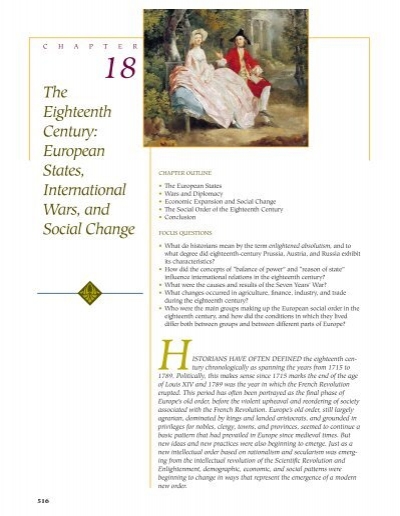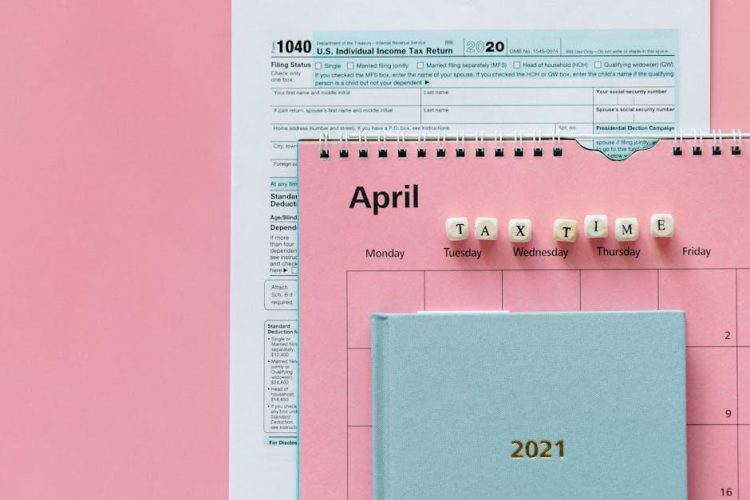Once upon a time, in a land far, far away, there lived kings and queens who held more power than a toddler with a crown and a scepter. But as time marched on, the monarchy evolved, transforming from absolute rule to constitutional rule faster than you can say “off with their heads!” Join us on a whimsical journey through the ups and downs of monarchy evolution, as we explore the battle between sovereigns and citizens, absolute power and checks and balances, and which royal decree truly reigns supreme. But beware, dear reader, for this tale is filled with twists, turns, and perhaps even a royal scandal or two. So grab your crown and let’s embark on this regal adventure together!
Origins of Monarchy: From Absolute Power to Constitutional Limitations
Many centuries ago, kings and queens ruled with absolute power, making all decisions without any checks or balances. It was a time when the phrase “off with their heads” was a common threat, and royal whims could change the course of history in an instant.
However, as societies evolved and people began to demand more rights and freedoms, the concept of constitutional limitations on monarchs started to take shape. This meant that even rulers had to follow certain rules and couldn’t just do whatever they pleased. Imagine telling a king he can’t have a second slice of cake at tea time!
As these limitations were put in place, monarchs had to adjust to a new way of ruling. They had to listen to their advisors, consult with parliament, and sometimes even ask permission before taking certain actions. Talk about a blow to the ego!
Today, most monarchies operate under constitutional limitations, where the ruler’s powers are restricted by a set of laws and regulations. This has helped to prevent abuse of power and ensure that decisions are made in the best interest of the people. Long gone are the days of absolute power – now even kings and queens have to play by the rules!

The Rise of Absolute Monarchs: Consolidation of Power and Divine Right
During the rise of absolute monarchs, rulers were able to consolidate power by centralizing authority and weakening the influence of nobles and other potential challengers. This consolidation was often achieved through tactics such as creating standing armies, establishing bureaucratic systems, and implementing harsh punishments for dissenters.
One key aspect of absolute monarchies was the concept of divine right, which held that rulers were chosen by God to rule with absolute authority. This belief was often used to justify the monarch’s actions and suppress any opposition, as questioning the ruler was seen as tantamount to questioning God himself.
With their power secure, absolute monarchs were able to enact sweeping changes in their realms. From implementing new laws and policies to embarking on ambitious building projects, these rulers left a lasting impact on their societies. However, their absolute power also led to abuses and corruption, as unchecked authority often breeds tyranny.
In the end, the era of absolute monarchs was a time of both great achievement and great turmoil. While these rulers were able to consolidate power and assert their divine right to rule, their reigns were also marked by oppression and unrest. The legacy of the rise of absolute monarchs continues to shape our understanding of power and authority to this day.

Social Contract Theory: Shifting Authority from Monarch to Constitution
In the wild world of political philosophy, the Social Contract Theory stands tall as a grand wizard of governance. Imagine a time when kings and queens ruled the lands with iron fists and flowy robes. But fear not, for the peasants revolted and demanded a snazzy new thing called a constitution. So, what’s the deal with this whole shifting authority thing from monarchs to constitutions? Let’s break it down for you, dear reader!
First off, picture your quintessential monarch – lounging on a golden throne, demanding peasants to kiss their ring, and all that jazz. Now, think of a constitution – a fancy document filled with rules, rights, and probably a few lawyer jokes. The shift from monarch to constitution is like switching from royal decrees to a rulebook with emojis and footnotes. We’re talking about trading in crown jewels for the fine print!
So, why are constitutions all the rage these days? Well, for starters, they give power to the people instead of just one person wearing a crown that doubles as a headache-inducing hat. With a constitution, everyone gets a say in how things are run, like deciding on important stuff such as whether pineapple on pizza should be outlawed (the correct answer is yes, fight me). It’s like a democratic buffet where even the pickiest eaters can find something to nibble on.
In conclusion, the shift from monarch to constitution is like upgrading from dial-up internet to WiFi – sure, you might miss the nostalgic sound of screeching modems, but you can’t deny the convenience of streaming cat videos at lightning speed. So, embrace the power of the constitution, wave farewell to those bejeweled monarchs, and let freedom ring (or at least buzz on silent mode).
Enlightenment Ideals: Advocate for Limited Monarchy and Individual Rights
Often seen as the key architect of Enlightenment philosophy, John Locke famously argued for the idea of limited monarchy and protection of individual rights. Here are a few reasons why advocating for these Enlightenment ideals can lead to a fairer and more just society:
Protection from Tyranny:
- By limiting the powers of the monarchy, we can prevent a single ruler from becoming too powerful and potentially tyrannical.
- Ensuring that the government is not above the law can protect citizens from abuse of power and unjust rule.
Empowerment of Individuals:
- Individual rights guarantee that each person has the freedom to express themselves and pursue their own happiness without fear of oppression.
- By championing the rights of the individual, we strengthen the fabric of society and promote diversity and equality for all.
Balance of Power:
- A limited monarchy ensures that power is not concentrated in the hands of a few, but is distributed among various branches of government.
- Protecting individual rights helps to maintain a delicate balance between the government and its citizens, fostering a healthy and flourishing society.

Democratic Revolutions: Monarchies Transitioning to Constitutional Rule
Welcome to the Age of Enlightenment
There’s nothing like watching a good old-fashioned monarchy struggle to keep up with the times. As the winds of change blow through Europe, it seems the Divine Right to Rule is getting a serious reality check. From the glitzy palaces of France to the cobblestone streets of Britain, kings and queens are shaking in their royal boots as democracy knocks on their gilded doors.
But fear not, dear monarchs! It’s not all doom and gloom. Transitioning to constitutional rule can actually be quite liberating. Just think of all the extra time you’ll have for afternoon tea and polo matches once you’re no longer burdened with the weight of absolute power. Plus, who doesn’t love a good parliamentary debate every now and then?
So grab your crown jewels and get ready for the ride of a lifetime. Whether you’re a reluctant ruler or a power-hungry despot, the age of divine monarchies is coming to an end. Embrace the wave of democratic revolutions sweeping across the continent and join the ranks of constitutional royalty. You might just find that ruling by the will of the people is a lot more fun than playing with a scepter all day!
Contemporary Monarchies: Balancing Tradition with Modern Governance
When it comes to contemporary monarchies, the struggle to balance tradition with modern governance can often feel like trying to fit a square peg into a round hole. It’s like trying to convince Queen Elizabeth to trade in her crown for a smartphone – it just doesn’t quite match up!
On one hand, you have the age-old traditions and rituals that have been passed down for generations. From royal weddings to coronations, these ceremonies are sacred and steeped in history. But on the other hand, you have a rapidly changing world that demands transparency, accountability, and efficiency in governance – not exactly qualities that have historically been associated with monarchies.
So how do contemporary monarchies navigate this tricky balancing act? Well, they have to get creative! Here are a few ways they can blend tradition with modern governance:
- Embrace technology: While the Queen may not be ready to ditch her crown for a smartphone, she can certainly use technology to communicate with her subjects and streamline administrative processes.
- Empower the people: In a modern democracy, it’s important to give the people a voice. Monarchies can incorporate democratic principles by involving citizens in decision-making processes.
- Lead by example: Monarchs can demonstrate their commitment to modern governance by championing causes such as sustainability, equality, and social justice.
Challenges and Opportunities: Adapting Monarchies to the 21st Century World
Monarchies may seem a bit old-fashioned in today’s fast-paced world of technology and social media, but that doesn’t mean they can’t adapt and thrive. The challenges and opportunities facing monarchies in the 21st century are as numerous as they are diverse, but with a little creativity and a lot of royal charm, anything is possible.
One challenge facing monarchies is the need to modernize their image and appeal to a younger generation. With millennials and Gen Z-ers more interested in social justice and environmental issues than royal protocol, monarchies must find ways to stay relevant. This could mean embracing social media, attending more public events, or even learning to dance the latest TikTok trends. Who knows, maybe the Queen will go viral with a royal lip sync battle!
On the flip side, there are also plenty of opportunities for monarchies to shine in the 21st century. With their long-standing traditions and connections to history, monarchies have a unique appeal that can attract tourists, boost the economy, and foster national pride. By finding ways to balance tradition with innovation, monarchies can not only survive but thrive in a rapidly changing world.
- Embrace diversity: Monarchies can use their position to promote inclusivity and celebrate the rich tapestry of cultures within their realms. Who wouldn’t want to see a royal fashion show featuring designs from all corners of the kingdom?
- Go green: Monarchies have the power to lead by example when it comes to sustainability and environmental conservation. Imagine if every royal palace had a rooftop garden or used renewable energy sources!
- Support the arts: Monarchies can use their patronage to elevate and support artists, musicians, and performers. Why not host a royal talent show to showcase the kingdom’s best and brightest?
FAQs
What is the main difference between constitutional and absolute monarchy?
Well, my dear reader, the main difference lies in who holds the power. In a constitutional monarchy, the monarch’s powers are limited by a constitution or a set of laws, whereas in absolute monarchy, the monarch holds all the power and makes all the decisions. It’s like the difference between sharing your fries with a friend and keeping them all to yourself – except on a much grander scale.
How did constitutional monarchy come about?
Ah, the birth of constitutional monarchy – a tale as old as time (well, almost). It all started with those pesky nobles and their demands for rights and freedoms. Over time, monarchs began to realize that sharing a bit of power might just prevent a full-blown revolt. And so, constitutional monarchy was born, much to the chagrin of power-hungry royals everywhere.
What are some examples of countries with constitutional monarchies?
Oh, there are plenty of countries where the monarch’s powers are about as limited as a toddler’s attention span. Take the United Kingdom, Japan, Sweden, and Norway, for example. These countries have monarchs who are more like glorified figureheads than all-powerful rulers. It’s all pomp and circumstance, with a dash of actual governing thrown in for good measure.
Is absolute monarchy still relevant in the modern world?
Well, if you enjoy ruling with an iron fist and having your every whim catered to, then maybe absolute monarchy is the life for you. But in today’s world of checks and balances, accountability, and pesky things like human rights, absolute monarchy is about as fashionable as a mullet. So unless you’re a die-hard fan of Game of Thrones, you might want to stick with the more modern approach to ruling.
What are the potential drawbacks of both constitutional and absolute monarchy?
Ah, the age-old question of power and its pitfalls. In a constitutional monarchy, the main drawback is that the monarch can often be seen as little more than a figurehead, with the real power lying elsewhere. On the other hand, absolute monarchy can lead to tyranny, oppression, and the occasional beheading (yikes!). It’s like choosing between a rock and a hard place – but with way fancier hats.
—
Long Live the Crown!
As we bid adieu to this journey through the evolution of monarchy, one thing remains certain – whether it’s constitutional or absolute rule, the allure of royalty and the power of a good old crown will always have us coming back for more. So let’s raise our goblets to the kings and queens of yore, and may their reigns be forever remembered in the annals of history. Long live the crown!






